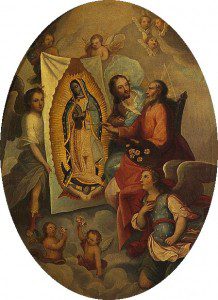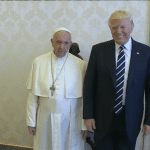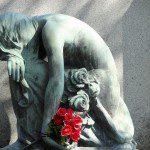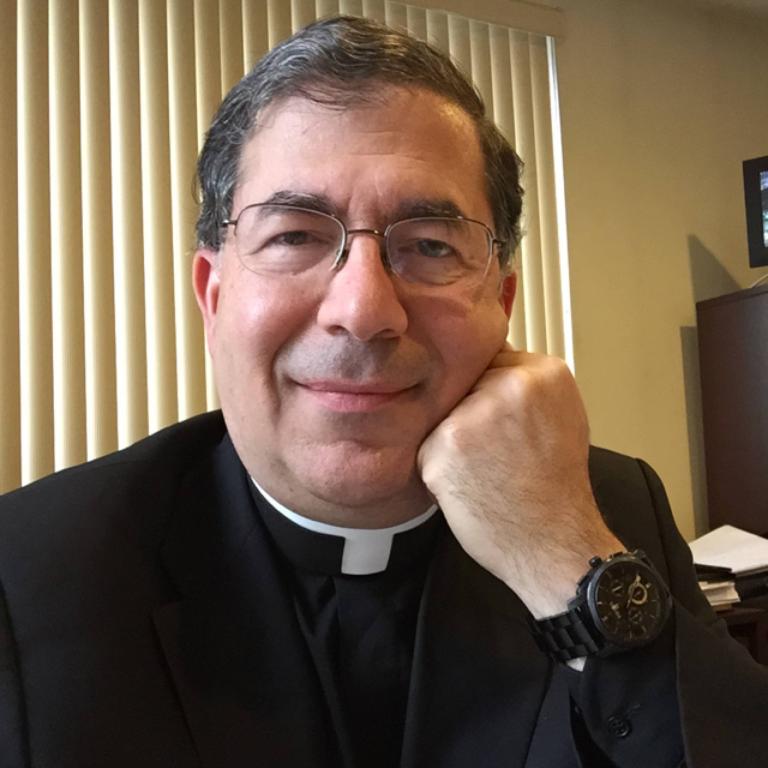Religious symbolism can be dangerous to those who benefit from oppression.
Some try to present evils – racism, capitalism, euthanasia, machismo, etc., – as goods, or at least try to justify why some form or expression is tolerable, if not useful.

On the other hand, some people try to water down goods and their use for liberation (from all kinds of sin). When we present the Mother of God, of Liberation, as “Mother of Resignation”, we engage in violence against our holy faith and against our oppressed brethren.
When the Church – as institution and body – embraces secular power and turns away from the injustices committed against the least of these, insisting, instead, that the poor look forward to heavenly things and not worry about feeding their children, religion becomes das Opium des Volkes or “opiate of the masses”.
When the Church compromises her mission of prophetic witness – often practiced against the powers of the world – the people lose their guide and often fall prey to secular liberation movements.
Indeed, when this happens, evangelization suffers and Christianity is seen to be on the side of the oppressor, often the “capitalist” system. Resentment towards religion, in cases such as these, is very understandable.
We must not take away from the oppressed their liberating Guadalupe – instead, we must join the oppressed in their struggle for liberation.
Guadalupe appeared to the oppressed in society, but sought to unite her children and lead them to true liberation. She was a mestiza, the symbols on the tilma could be found in the book of Revelation, she prayed like the Europeans, had a cross pendant, and had a hand of pale – Spanish/European – complexion united to a brown hand. She sought unity.
Today, the struggle for liberation continues. Our call to subversive love has not expired. False ‘culture’ is imposed and strangers are denied their identity upon entering this land we call the United States. Capitalism denies the life of the other, alienating them, and refusing them a true dignity of labor. We continue to justify systems of oppression and domination across the land of Guadalupe’s special children, having come to the defense of tyrants and exploited the population for economic gain in their times of vulnerability and need. NAFTA and other “free trade” agreements demonstrates itself a failure. Our “war on drugs” has seen countless innocents killed south of our border, while consumption within our borders tells of the void left and compulsively fed by the system of consumerism.
We must give back to Guadalupe her true meaning in the identity of our Hispanic and latinx brethren. She is “the mother of the man crucified for ‘stirring up the people.'”⁴ But we, as a people, should unite. The yearning for liberation will not be dismissed by some call to patiently endure one’s state of suffering in injustice. As a religious people, we should join together for authentic liberation, truly embarking on a new evangelization.
Our brothers and sisters are hungry, tired, overworked, commodified, drugged, abused, exploited, thirsty, naked, unwelcome, homeless, violated, killed. To evangelize requires that we honor and exalt the dignity of our neighbor. Let us come to satisfy every need – spiritual and material.
A thief comes only to steal and slaughter and destroy;
I came so that they might have life and have it more abundantly. (John 10:10)
We conclude, then, with some words of Enrique Dussel who often inspires us to never forget the preferential, subversive love for the poor we are called to embody, as Our Lady does:
Latin American liberation will be profoundly of the people when it is able to join the political proposals for liberation with the religious symbols that have formed the soul of the people. The secularization of the process of liberation is playing into the hands of the prince of this world, who is only too happy to abolish the religious tradition of a people. When the “Guadalupana,” woman of the people and suffering with the people, again becomes the people’s banner – as in the time of Hidalgo, who said, “The land belongs to those who work it” – then indeed liberation will arise from the very heart of the people.⁵
Have a wonderful celebration of the feast of Our Lady of Guadalupe,
Keith Michael Estrada
¹ Dorothy Day saw this, for example, when she said, “The bourgeois, the materialist, fights for abstractions like freedom, democracy because he has the material things of this life. (Which he is most fearful of being deprived of.) The poor fight for bread, for increase in wages, for time to rest, for warmth, for privacy, these things are holy” (The Catholic Worker, June 1944). Similarly, we may consider Leon Bloy’s famous quote, which is especially interesting considering how Christ identifies primarily with the poor and the oppressed (who make up the lot of the conquest’s victims): “It was the bourgeois who crucified Christ; on Golgotha he cut the world off from Christ, money from the poor.”
² I highly recommend Enrique Dussel’s A History of the Church in Latin America: Colonialism to Liberation (1492-1979) for further study.
³ You should consider reading the General Directory for Catechesis and pay special attention to the sections on inculturation. Guadalupe offered the Good News of Jesus Christ through inculturation. We, however, seem to be in an era of “mission” where, instead of discovering life in the culture of a people, are now stripping away as useless or non-Christian the identity, the memory of those we “mission” to. There is no evangelization where identity is dismissed and “culture” is imposed externally.
⁴ Dussel, Enrique, Ethics and the Theology of Liberation, 1978, p. 119.
⁵ Ibid.
* * *
This piece was originally published on this blog for the feast of Our Lady of Guadalupe in the year 2015.
* * *












